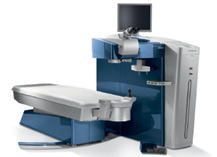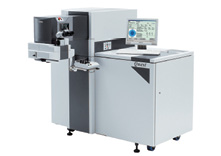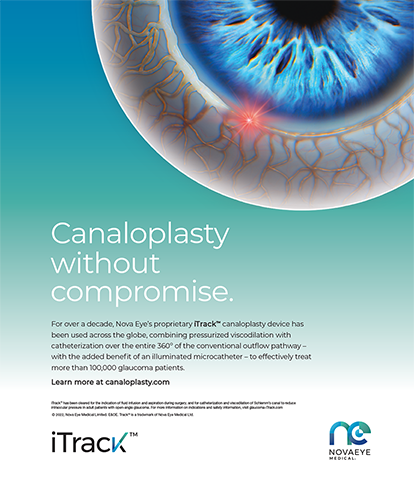
We ophthalmologists constantly face the decision of whether or not to invest in capital equipment. Technology continues to evolve, making new diagnostic and therapeutic equipment available. It lies with us to discern if technology has changed enough to warrant updating our existing equipment. Excimer lasers, an integral part of corneal refractive surgery, cost hundreds of thousands of dollars. Based on my experience, however, I believe this technology has changed enough to justify the acquisition of a new system.
HISTORY
In addition to becoming faster, excimer laser systems have abandoned broad beams in favor of scanning spot pulses. Eye tracking and iris registration help ensure that laser energy is accurately placed; wavefront-guided and wavefront-optimized platforms allow surgeons to customize laser vision correction for patients.
The incorporation of topography-guided treatments is a landmark in the evolution of excimer laser technology. Treatment can now be delivered based on the shape of the corneal surface, and it can treat irregularities in corneal elevation and spherocylindrical refractive error. In my opinion, the development of topography-based ablations justifies an upgrade. This type of ablation pattern gives surgeons the potential to correct various corneal irregularities such as irregular astigmatism. More complex cases such as corneas with decentered ablations can also be treated.
TOPOGRAPHY-GUIDED PLATFORMS
Two platforms available in the United States provide topography-guided laser treatment—the Wavelight EX500 excimer laser (Alcon; Figure 1) and the Nidek EC-5000 Quest Laser System (Nidek; Figure 2). The former is the only excimer laser to operate at 500 Hz, with an average treatment time of 1.4 seconds per diopter. According to Alcon and based on my experience, it is the fastest refractive surgery platform available in the United States. The increased speed helps to reduce the potential for dehydration of the stromal bed, which should theoretically enhance the accuracy of the treatment. Topography-guided treatments with the Wavelight are approved by the FDA but are not currently available in the United States. Alcon is expected to roll out this feature as a software upgrade for the laser later this year.

Figure 1. The Wavelight EX500 excimer laser.

Figure 2. The Nidek EC-5000 Quest laser.
The Nidek laser is approved by the FDA to provide topography-assisted treatments. In the CATz (customized aspheric treatment zone) mode, the laser performs additional ablations to treat corneal irregularities detected by corneal topography. In a multicenter trial submitted to the FDA, 135 eyes with refractions ranging from -0.50 to -7.00 D of myopia with 0.50 to 4.00 D of astigmatism were treated with the Nidek laser. Six months postoperatively, 89% of eyes had a UCVA of 20/20 or better, and 49% of eyes had a UCVA of 20/16 or better.1
At a Glance
• Topography-based ablations allow treatments based
on the shape of the corneal surface, and they can treat
irregularities in corneal elevation and spherocylindrical
refractive error.
• The Wavelight EX500 excimer laser and the Nidek
EC-5000 Quest Laser System are approved by the FDA
for topography-based ablations.
• The learning curve for topography-guided treatments
is minimal.
MY EXPERIENCE
I always strive to offer patients the best technology available. Even though my practice already had two different excimer laser platforms, my partner and I purchased the Nidek laser about 1 year ago. We felt strongly that the topography-assisted treatments would provide our patients with better outcomes and distinguish our practice from others in our market. Our patients have been very impressed with this technology and have gravitated toward it. We have also been able to offer treatments at a higher price point, thereby increasing profit margins.
My partner and I have performed over 1,000 procedures with the Nidek laser and have been extremely pleased with the results. Fifty-five percent of the treated eyes have achieved a UCVA of 20/16 or better, and 92% have achieved 20/20 or better.
CONCLUSION
Based on my positive experiences with topography-guided treatments, I believe a new excimer laser is worth the expense. With the capability to treat corneal irregularities, this technology increases the number of patients who may be eligible for laser vision correction. We are now able to perform advanced surface ablation on select patients with forme fruste keratoconus. These advanced treatments are possible with a minimal learning curve involving a handful of cases. n
1. Dougherty PJ, Waring G, Chayet A, et al. Topographically guided laser in situ keratomileusis for myopia using a customized apherical treatment zone. J Cataract Refract Surg. 2008;34:1862-1871.
Shamik Bafna, MD
• practices at the Cleveland Eye Clinic, Brecksville, Ohio
• drbafna@clevelandeyeclinic
• Financial disclosure: None acknowledged


